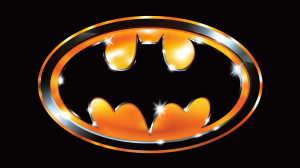History in mainstream superhero comics is a funny thing. Even beyond the simple “sliding scale” dilemma of publisher timelines, and how old certain longstanding characters are supposed to be, there’s the larger question of when in a character’s journey a story is set. Particularly in the world of Batman and those in his orbit, countless stories have been written at three extremes – the plucky “year one” origin stories, the grisly washed-up futurism of tales like The Dark Knight Returns and Batman Beyond, or a seemingly never-ending saga of the present “glory days.” To an extent, there’s a lot of middle ground in between that has potential – something the debut of Cliff Chiang’s Catwoman: Lonely City understands and embodies to the fullest extent. Catwoman: Lonely City #1 is not only among the best solo outings for its titular character, but it’s easily one of the most effective and inventive Gotham City stories I’ve read in recent years.
Videos by ComicBook.com
Catwoman: Lonely City #1 follows an older Selina Kyle, one sent to prison after a mysterious and tragic event known as “Fools’ Night” impacted Gotham City. As she is released from prison a decade later, Selina has to grapple with all of the ways Gotham has changed – particularly under the reign of Mayor Harvey Dent, who keeps the city free of crime with his militaristic “Batcop” supersoldiers. When a chain of events cause Selina to reexamine the past, the status quo of this new Gotham City, and the lives of a number of key players within it, is put to the test – potentially for the better.
On the surface, it might be easy to cast Lonely City in the same vein of those aforementioned futuristic Gotham tales (or even the cyberpunk police state of the Future State timeline established earlier this year), given the militaristic sci-fi elements existing amid its backdrop. And honestly, a lesser creator would have absolutely taken the ensemble in Lonely City—and even Selina herself—and heightened them to every possible nihilistic extreme, leaning on their gimmicks in a surprising and lawless future. Instead, the tone Chiang takes with his worldbuilding and his premise has a mix of levity and humanity that is utterly fascinating, focusing much more on the unspoken trauma of Selina and the familiar faces she crosses paths with, while also injecting some genuinely fun pieces of lore. There’s a sense these characters have endured so much they can never fully go back to who they were in their prime, but the hope of a better future—or at least, of one where they feel content—is within reach.
Comparisons will surely be drawn between Lonely City and Chiang’s work as the artist on Paper Girls at Image Comics, especially given the colorful cyberpunk-adjacent elements and the sense of time slipping past our protagonists. But there’s something uniquely satisfying about having this story riff on the familiar elements of the DC universe, particularly on characters who have morphed from simple pulp hits into complex pop culture mainstays. While this Gotham City isn’t quite the one within DC’s main continuity, it’s one that acknowledges the decades of DC history weighing on each character’s shoulders. As a reader, it feels like you’re peeking in on a point in time that previously existed unspoken beyond the margins of other comics, one where characters begin to cope with the trauma and emotion that they’ve largely compartmentalized in other tales. While there really is no weak point within the narrative of Lonely City, those earnest moments are what stand out for me – one scene involving Selina and Barbara Gordon, in particular, is going to be burned into my brain for the foreseeable future.
On its own, Chiang’s narrative would have turned Lonely City into one of the best DC books of the year, but having him also contribute on an aesthetic level turns the comic into an instant classic. Chiang’s attention to detail is endlessly satisfying, particularly with regards to costume and background design, to the point where every sequence is something that I’m eager to revisit in the printed Black Label format. His panel construction and use of facial expression is also consistently excellent, providing a cinematic quality to even the most mundane sequences. Chiang’s color work helps the series maintain its tone in some subtle, but essential ways, with some truly brilliant color schemes for key action sequences. His lettering is also subtly inventive, and adds a sense of authenticity furthering the earnestness of what Chiang is selling readers.
If you keep an eye on the conversation surrounding mainstream superhero comics, you’ve probably heard a lot of hype for Catwoman: Lonely City – and trust me, it is more than warranted. This week’s debut issue is stunning on every account, both for the ambitious ways it remixes the lore of Gotham City and how effortlessly Cliff Chiang realizes these ambitions. This is the kind of comic that not only deepens my appreciation for countless back issues featuring Catwoman appearances, but makes me proud of what stories superhero comics can tell in this moment. Catwoman: Lonely City #1 is like nothing else in DC’s arsenal right now, and you owe it to yourself to check it out.
Published by DC Comics
On October 19, 2021
Written by Cliff Chiang
Art by Cliff Chiang
Colors by Cliff Chiang
Letters by Cliff Chiang
Cover by Cliff Chiang








